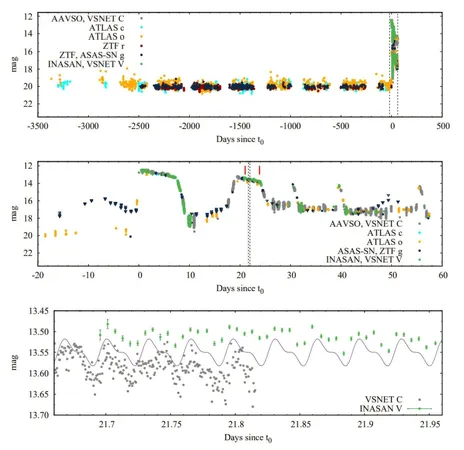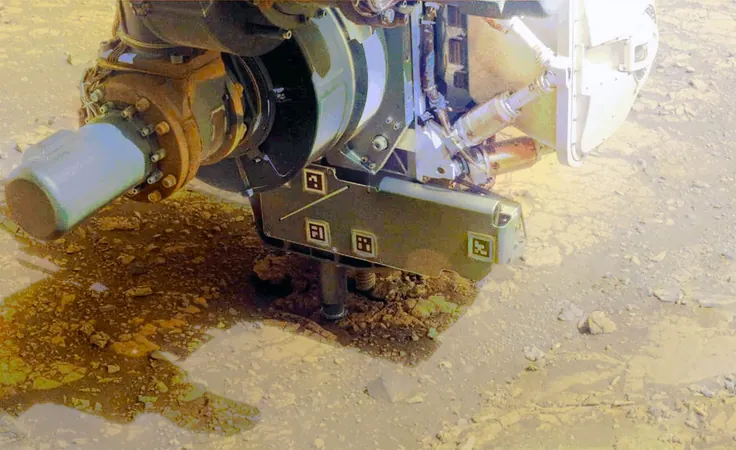
Astronomers Make Groundbreaking Discovery: A New Ultracompact Binary System with Stunning Outbursts!
2025-06-04
Author: Yu
A Stunning Stellar Find!
In an electrifying breakthrough, an international team of astronomers has uncovered a brand new ultracompact binary system, designated TCP J07222683+6220548. This celestial marvel, documented in a research paper from May 27, showcases infrequent but striking outbursts that have drawn significant attention from the scientific community.
What are Cataclysmic Variables?
Cataclysmic variables (CVs) are mesmerizing binary star systems that consist of a white dwarf and a companion normal star. The white dwarf dramatically accretes matter from its partner, leading to unpredictable surges in brightness before settling back into a quieter state.
Meet the Rare AM CVn Stars!
Among these CVs are the elusive AM CVn stars, named after their prototype, AM Canum Venaticorum. Characterized by their helium-rich compositions, these stars are unique in that they draw hydrogen-poor matter from their compact companions. With orbital periods ranging from a mere five minutes to about an hour, they are some of the most fascinating subjects in astronomical research.
The Discovery of J0722!
Led by Alexander Tarasenkov from the Russian Academy of Sciences, the team identified the J0722 system on January 20, 2025, during the groundbreaking New Milky Way survey. The discovery coincided with a spectacular outburst that lasted seven days, followed by several brightening events over the next months, confirming its AM CVn classification.
Shining Bright in the Cosmos!
Located approximately 1,874 light years from Earth, J0722's spectrum reveals a striking blue continuum and prominent helium absorption lines, clearly lacking hydrogen. This unique signature is a hallmark of outbursting AM CVn systems. Remarkably, J0722 peaked at a brightness of 12.45 magnitude, marking it as one of the brightest outbursts ever observed in this category.
Understanding the Light Curve!
Interestingly, the researchers discovered periodic brightness modulations in J0722's light curve, clocking in at around 46.87 minutes. This phenomenon, referred to as positive superhumps, typically occurs in certain dwarf novae and related systems.
Looking Ahead!
During J0722's initial re-brightening phase, which occurred shortly after the outburst, the superhumps were notably prominent, remaining stable in period. The research team emphasized the similarities between J0722's outburst characteristics and those found in long-period AM CVn systems, underscoring the necessity for further observations of these elusive celestial wonders.
A Call for More Research!
Ultimately, the researchers warned that many outbursting AM CVn systems might go unnoticed without detailed follow-up studies, potentially hiding among the new cataclysmic variable discoveries. This highlights an exciting avenue for future astronomical exploration.



 Brasil (PT)
Brasil (PT)
 Canada (EN)
Canada (EN)
 Chile (ES)
Chile (ES)
 Česko (CS)
Česko (CS)
 대한민국 (KO)
대한민국 (KO)
 España (ES)
España (ES)
 France (FR)
France (FR)
 Hong Kong (EN)
Hong Kong (EN)
 Italia (IT)
Italia (IT)
 日本 (JA)
日本 (JA)
 Magyarország (HU)
Magyarország (HU)
 Norge (NO)
Norge (NO)
 Polska (PL)
Polska (PL)
 Schweiz (DE)
Schweiz (DE)
 Singapore (EN)
Singapore (EN)
 Sverige (SV)
Sverige (SV)
 Suomi (FI)
Suomi (FI)
 Türkiye (TR)
Türkiye (TR)
 الإمارات العربية المتحدة (AR)
الإمارات العربية المتحدة (AR)